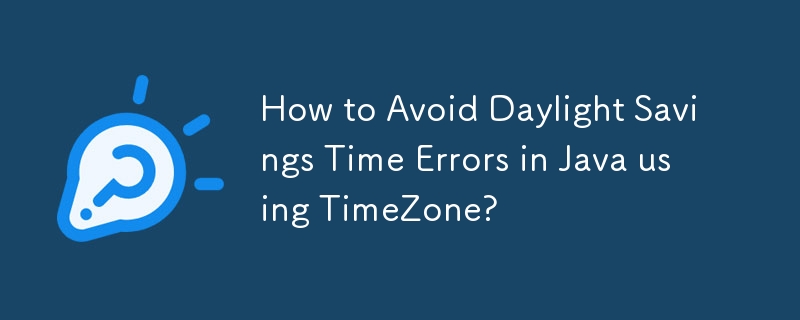

Resolving Daylight Savings Challenges in Java with TimeZone
When working with Java applications that require precise timekeeping, navigating daylight savings time (DST) transitions can be a potential pitfall. This article explores a common issue encountered when using TimeZone to handle DST and provides a reliable solution.
One frequent problem arises when attempting to print the correct Eastern Time (EST) in Java. Setting the time zone to EST using Calendar.getInstance(TimeZone.getTimeZone("EST")) may lead to incorrect time representation when DST is in effect, resulting in a one-hour time difference.
Avoid the Pitfalls of Three-Letter Time Zone Abbreviations
The primary culprit in this issue lies in the use of three-letter time zone abbreviations like "EST." These abbreviations represent standard time only and do not account for DST. As a result, when DST is being observed, these abbreviations fail to adjust the time accordingly.
To overcome this limitation, it is crucial to employ full time zone names, known as "TZDB zone IDs." These IDs provide a complete representation of a time zone, encompassing both standard and DST periods.
Embrace Full Time Zone Names for Precise Timekeeping
By replacing three-letter time zone abbreviations with TZDB zone IDs, we can ensure that the code reflects the correct time, regardless of DST transitions. For example, to capture the Eastern time zone:
<code class="java">TimeZone zone = TimeZone.getTimeZone("America/New_York");</code>Once the appropriate full time zone name is set, the code can accurately represent the time, taking into account both standard and daylight savings periods:
<code class="java">DateFormat format = DateFormat.getDateTimeInstance(); format.setTimeZone(zone); System.out.println(format.format(new Date()));</code>
Following these guidelines guarantees accurate timekeeping in Java applications, irrespective of the complexities of daylight savings time. By embracing full time zone names and avoiding three-letter time zone abbreviations, developers can ensure that their code reliably represents time values, empowering users to make informed decisions based on precise temporal data.
The above is the detailed content of How to Avoid Daylight Savings Time Errors in Java using TimeZone?. For more information, please follow other related articles on the PHP Chinese website!
 How to create a new folder in webstorm
How to create a new folder in webstorm
 How to solve the problem that document.cookie cannot be obtained
How to solve the problem that document.cookie cannot be obtained
 How to read carriage return in java
How to read carriage return in java
 cad break line command
cad break line command
 Introduction to interface types
Introduction to interface types
 Is Yiouoky a legal software?
Is Yiouoky a legal software?
 What are the SEO keyword ranking tools?
What are the SEO keyword ranking tools?
 What to do if the computer fakes death
What to do if the computer fakes death




